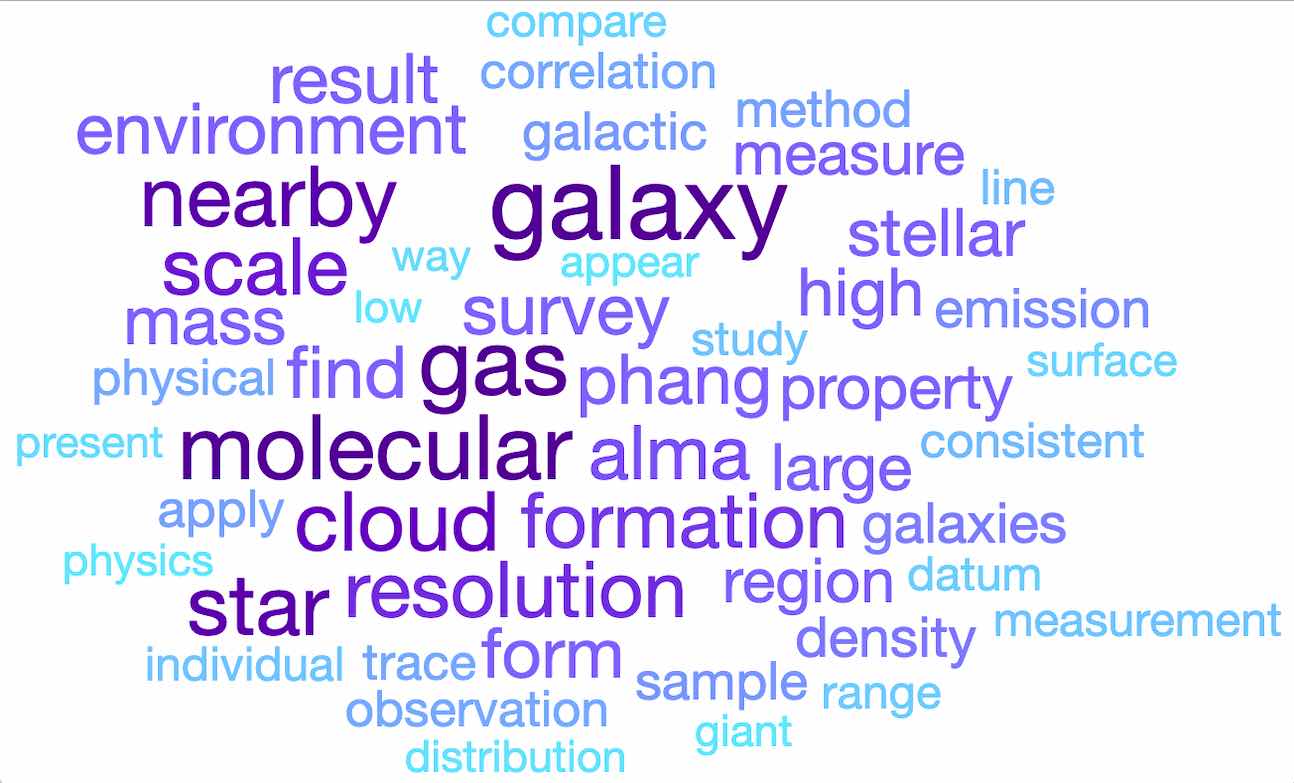My Research
My research focuses on understanding the physics of the interstellar medium (ISM) in the broad context of star formation and galaxy evolution. Leading observational efforts in the PHANGS and MAUVE collaborations, I synthesize measurements for the largest homogeneous sample of molecular clouds to date, quantify their star formation efficiencies and evolutionary timescales, delineate their dependence on host galaxy properties, and identify key physical drivers of such dependence. I also work closely with theorists on testing analytical and numerical models of star formation on the scales of both individual star forming regions and whole galaxies.
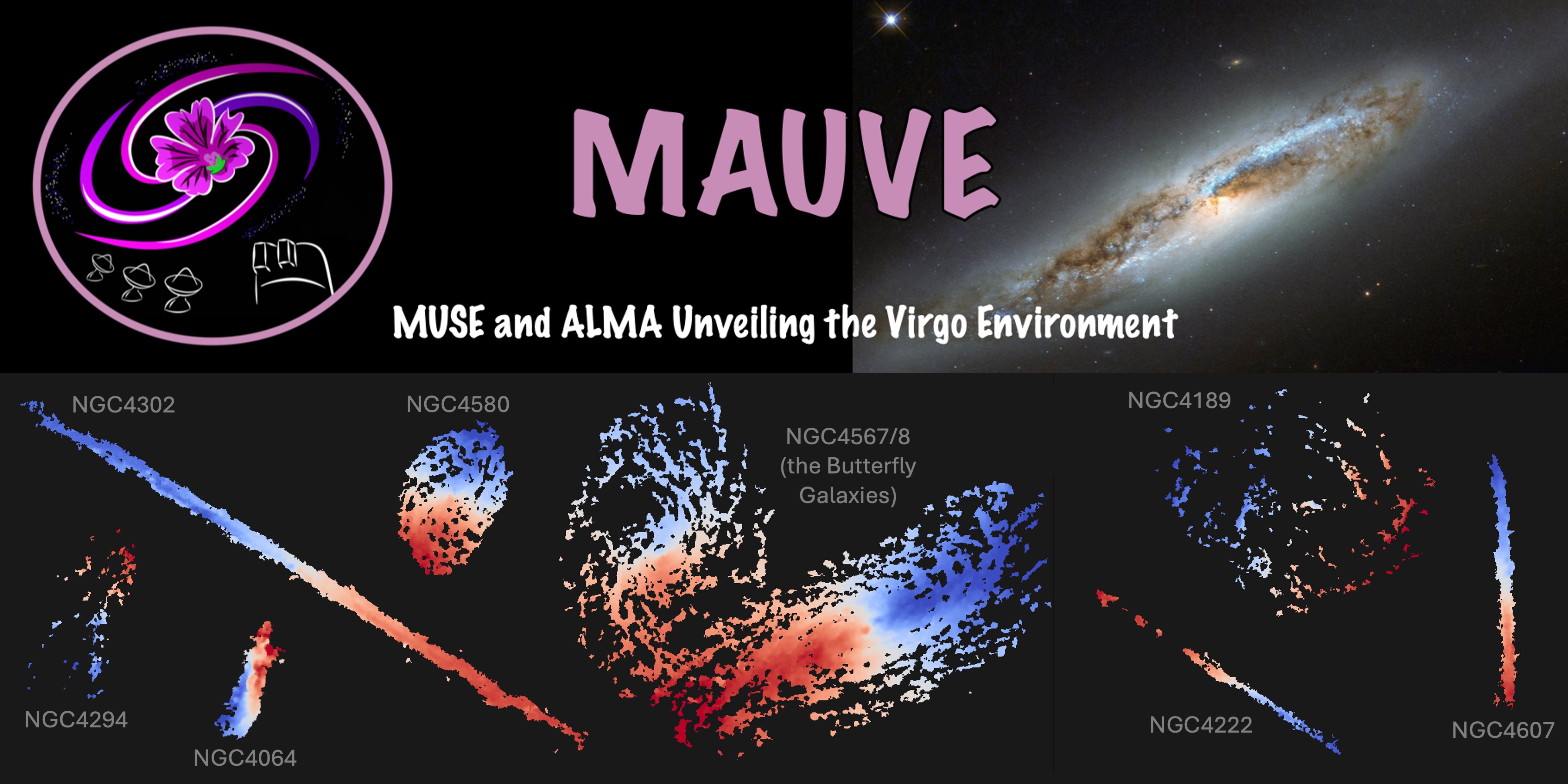
Tracing ISM Evolution and Galaxy Quenching in the Virgo Cluster
I am the PI of the MAUVE-ALMA program (400+ hours total on the ALMA main array and ACA) that obtains high-resolution CO imaging for 40 disk galaxies in the Virgo Cluster. This is a key part of the MAUVE project that uses ALMA, HST, and VLT/MUSE to investigate how the cluster environment shapes the gas-star formation cycle in the same set of Virgo satellite galaxies. These synergistic surveys will reveal the links between ISM structural, dynamical, and chemical evolutions and star formation quenching when and where environmental processes are at play, and as a function of infall stage into Virgo. We will produce a rich multi-wavelength dataset with huge legacy value for studies of the ISM, star formation, and environment-driven galaxy evolution.
MAUVE: [project website]
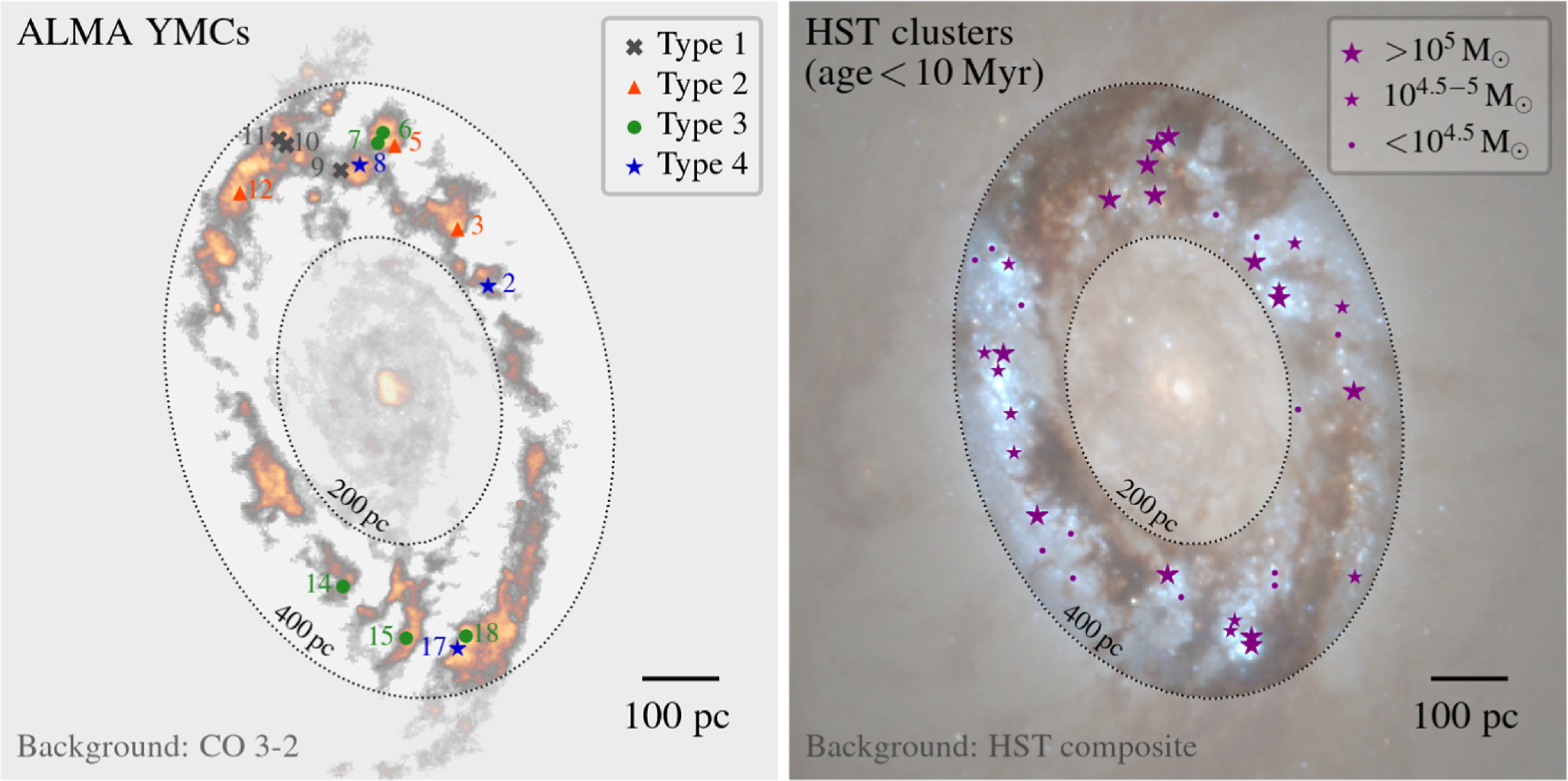
Star (Cluster) Assembly Timeline and Efficiency in "Starburst" Conditions
I am interested in the timescale and efficiency of star and cluster formation particularly in "starburst" environments with high gas density and pressure. My 2024 paper combined ALMA, HST, and JWST observations to examine a nearby nuclear starburst system. I found many young massive star clusters forming rapidly and exhausting their gas reservoir within 3-4 Myr. They constitute more than 30-50% of recent star formation in the entire nuclear starburst region. For these dense star-forming structures, various feedback processes can become less effective in regulating star formation, leading to high star and cluster formation efficiencies. These results have important implications for galaxy and globular cluster formation in the early universe.
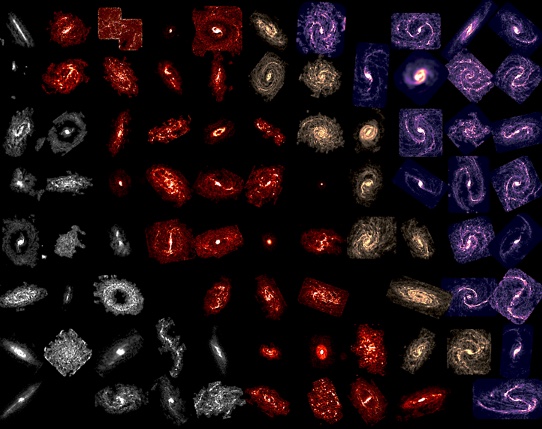
Mapping Molecular Clouds across the Local Star-forming Galaxy Population
I led the efforts on characterizing fundamental properties of molecular clouds in an unprecedented sample of nearby galaxies, using the PHANGS-ALMA CO(2-1) imaging data. This new dataset provides by far the best synthetic view of the molecular cloud populations inhabiting star-forming galaxies in the present-day universe. My paper in 2018 presented a thorough analysis of ~30,000 molecular cloud measurements across 15 galaxies. My second paper in 2020 further expanded this analysis to cover ~100,000 molecular cloud measurements across 70 galaxies.
Sun et al. (2020b):
[ADS,
data tables,
slides]
Sun et al. (2018):
[ADS,
video,
data table,
slides]

Molecular Clouds, HII regions, and Star Clusters in a Galactic Context
I am leading the construction and continuous improvement of a multiwavelength database, which leverages the full set of PHANGS surveys with cutting-edge facilities (including ALMA, HST, JWST, VLA, and VLT/MUSE). It synthesizes high-resolution measurements for molecular clouds, HII regions, star clusters, as well as ancillary data for the host galaxies. This rich database has supported numerous PHANGS / non-PHANGS projects, including my first paper in 2020 highlighting the ISM pressure as a key regulator of molecular cloud dynamics and star formation rate in disk galaxies.
Sun et al. (2022):
[ADS,
data tables,
slides]
Sun et al. (2020a):
[ADS,
video,
data tables,
slides]
also see Vijayakumar, Sun, et al. (2025):
[ADS]

Measuring the Efficiencies of Star Formation and Stellar Feedback
I actively work on measuring robust star formation rates and efficiencies as well as quantifying their dependence on ISM properties. My paper in 2023 substantially measured the molecular gas depletion time, the star formation efficiency (SFE) per free-fall time and per orbital time, and the feedback yield over the full PHANGS galaxy sample. In two other papers in 2018 and 2025, my colleague and I specifically examined the SFE per free-fall time and its dependence on molecular cloud properties, finding tensions between the observed trends and analytic model predictions.
Sun et al. (2023):
[ADS,
data tables,
slides]
Utomo, Sun, et al. (2018):
[ADS]
Leroy, Sun, et al. (2025):
[ADS]
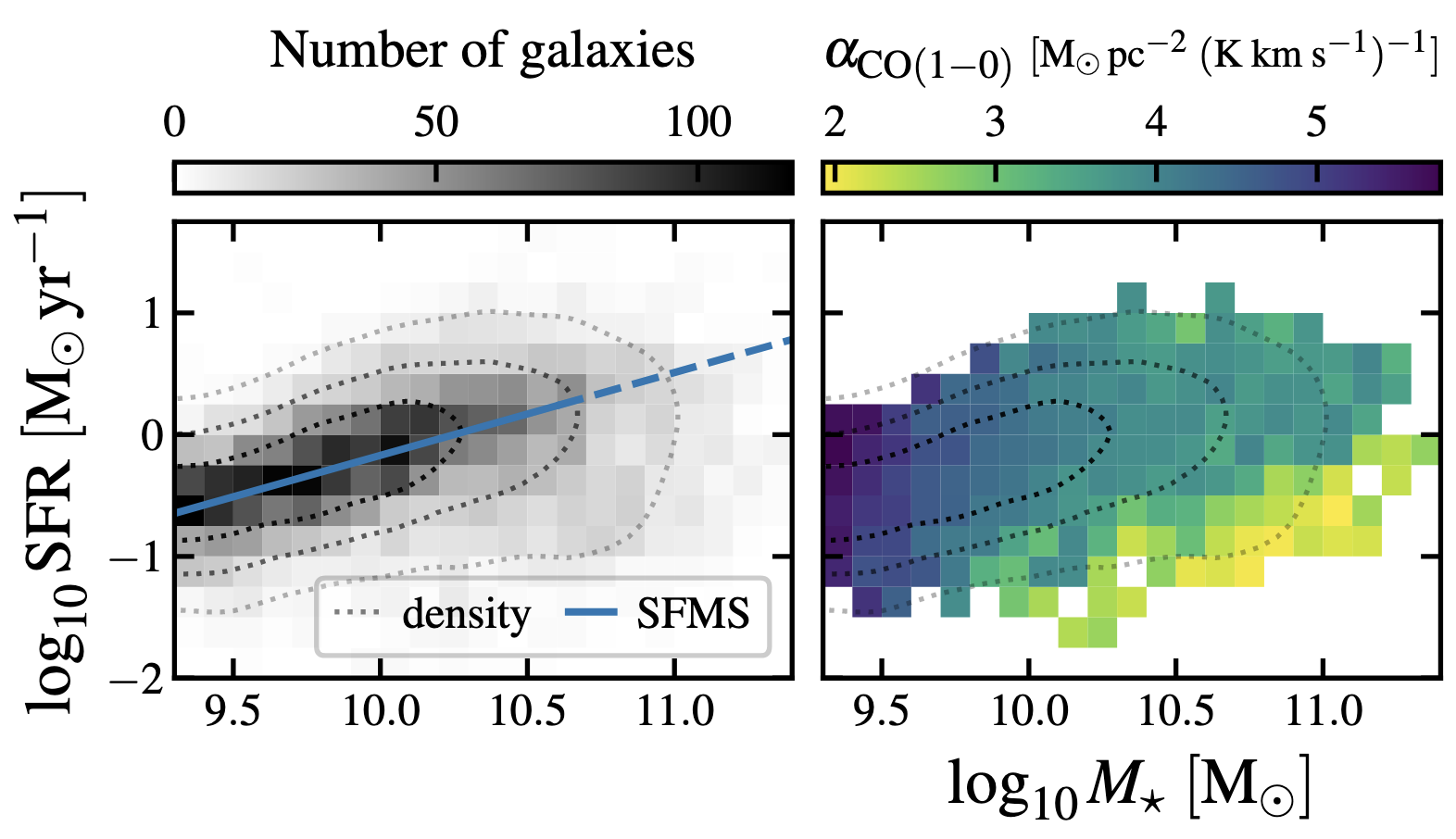
Empirical Estimates of the CO-to-H2 Conversion Factor
I have spent quite some time thinking about how to improve our treatments of the CO conversion factor (αCO), which is critical for interpreting CO emission but notoriously difficult to measure. My paper in 2025 addresses this problem by providing empirical prescription-based estimates of αCO for thousands of local galaxies, including common targets of many major CO surveys. We showed that αCO varies strongly and systematically within a galaxy (with galactocentric radius) and among galaxies (with stellar mass and SFR). Our data and code products enable reliable gas mass and star formation efficiency measurements in future extragalactic work.
Sun et al. (2025):
[ADS,
data tables,
Python module]
also see Teng et al. (2023, 2024):
[ADS links]
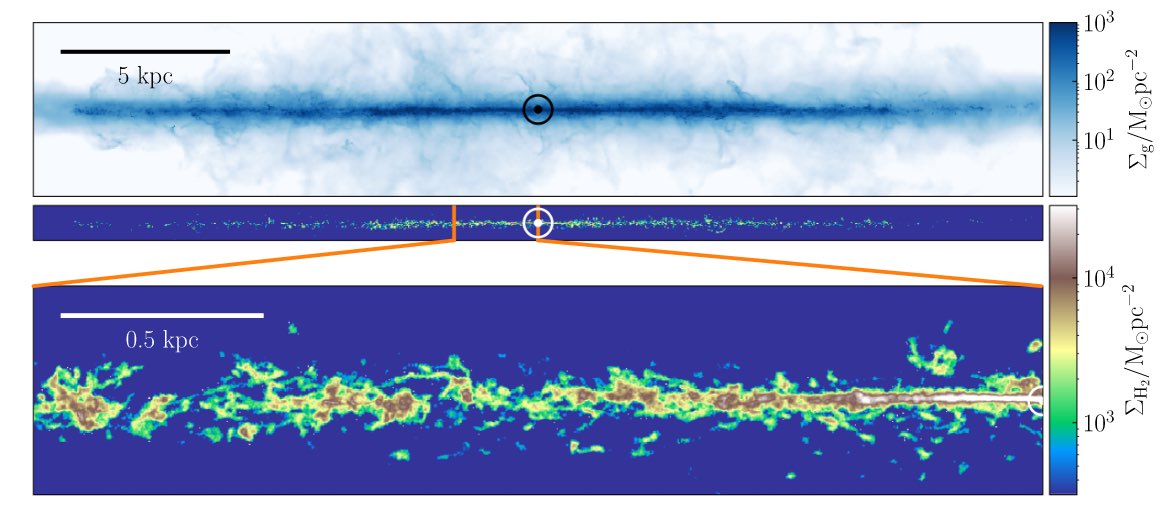
Connecting Observations with Numerical Simulations
I also work closely with researchers running numerical simulations over a broad range of spatial scales. In a 2019 paper, I conducted a proof-of-concept experiment in a collaborative project that compares the observed molecular clouds in M33 to those in a set of dedicated simulations. In a 2022 paper, my colleagues and I proposed a novel method for estimating the (unobservable) molecular disk vertical scale height in face-on galaxies and tested it in a galaxy-scale simulation. I am now working on extending these efforts to observations and simulations probing more extreme conditions, especially high gas density and pressure, in order to provide more stringent constraints on physical models of star formation, stellar feedback, and chemical network.
Jeffreson, Sun, & Wilson (2022): [ADS]
ADS Library ORCiD Google Scholar
